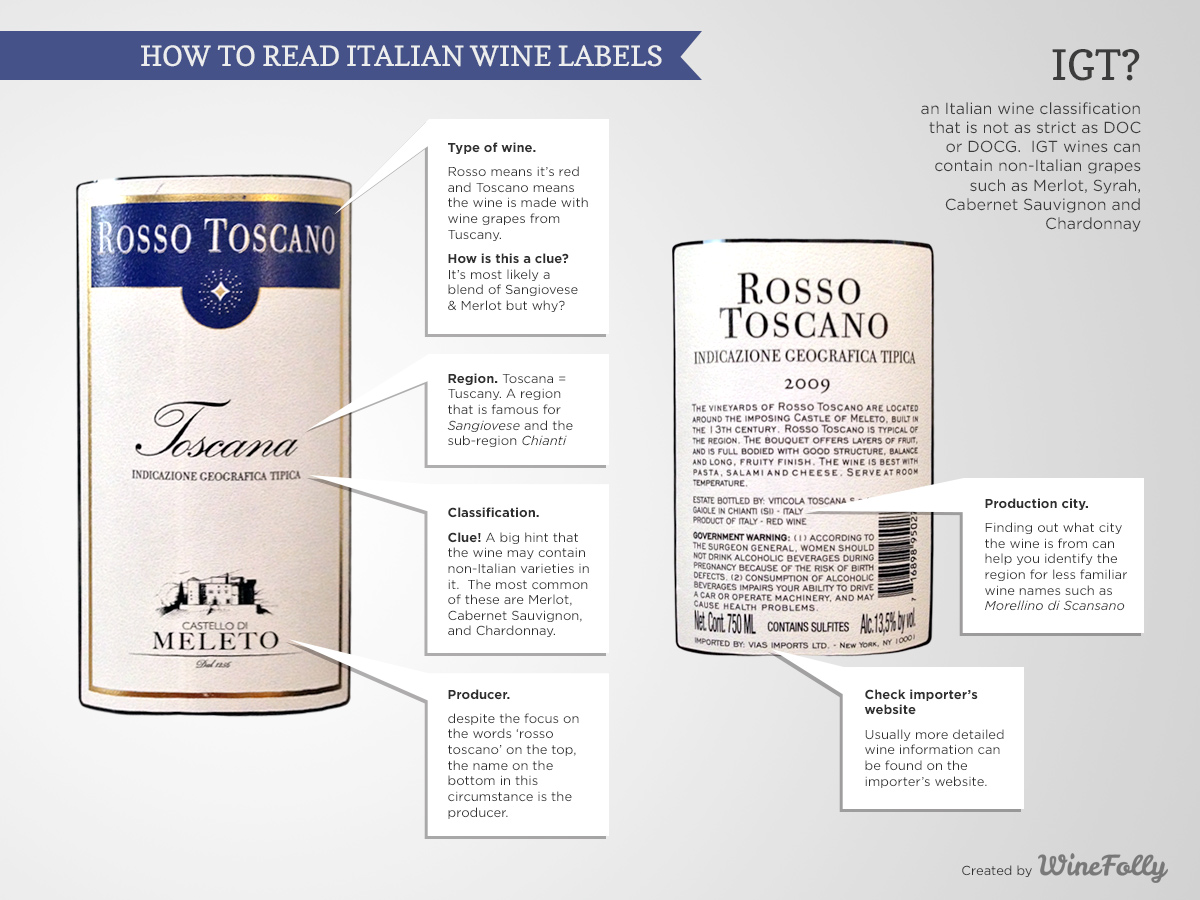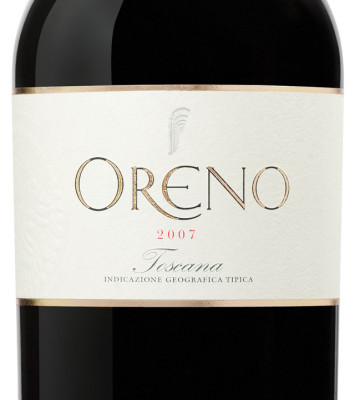Learn to understand Italian wine labels enough to get what you want. Here is a great set of tips and advice to keep handy so you can find and enjoy more Italian wine.
How to Read Italian Wine Labels
Parts of an Italian Wine Label
Italian wine labels are widely varied in how they look. Fortunately there are a specific set of information and clues that you can proactively seek out to determine what it is. The next time you are looking bewildered at an Italian wine label, try to identify the following characteristics:
- Wine Type This can be identified through 1 of three ways (see below)
- Region The region or sub-region will always be located next to the classification level
- Classification (DOCG, DOC, IGT, Vino da Tavola)
- Wine Name This is never next to the classification and often indicates that the wine is a blend of grapes as in the case of a Supertuscan wine.
- Producer Name Italian wineries will often use words like Tenuta, Azienda, Castello or Cascina in their name (see more examples below)
Don’t Know? It might be Sangiovese

Sangiovese is the most planted red wine grape in Italy and because of this, it’s known by many names, denominations and is the primary grape in many regional wines. If you’re ever confused, you can make a good estimate and say it’s Sangiovese and more often than not you’ll be right.
3 Ways That Italians Label Wine Types
Italians have 3 different ways of telling you what kind of wine is in the bottle. They’ll either list the:
- Grape Variety as in “Montepulciano d’Abruzzo” or “Sagrantino di Montefalco”
- By Region or sub-region, such as “Chianti”
- By Name such as “Sassicaia” (sass-ah-ki-yah)
By Grape
First things first, whenever a grape variety is mentioned, usually it’s named in association with a region. So, in the instance of Barbera d’Alba, this is probably a grape variety because it’s ‘Barbera’ ‘of Alba’. There are a few instances such as ‘Vino Nobile di Montepulciano’ where ‘Vino Nobile’ is a synonym of Sangiovese. However, most of the time, if you see a di or a d’ it is probably a grape. There are over 350 official grape varieties in Italy, so don’t beat yourself up if you haven’t heard of them all.
By Region
If the region is listed on the label, you will always see a classification after the regions name. So for instance, a bottle named by region/sub-region will say Chianti with the words “Denominazione di Origine Controllata e Garantita” right next to it. This means, the wine is relying on the classification to tell you what’s inside. So for instance Chianti must have a minimum of 80% Sangiovese. As the regional names cover larger areas, the classifications become less strict and the wines are usually a blend of the most popular grapes from the region. If you want to know what the most popular grapes by region are, check out the Italian Wine Region Map.
By Name
You can always tell if it’s a named wine by where the location of the name is on the label. The name is never next to the wine classification. Just so you know, the most common classification on named wines is IGT. This means that producers can use both Italian and non-Italian origin grapes in their wine (like Merlot). Some named wines have an additional regional name on the label (which would be located right next to the classification level). This will mean it falls under the requirements of that regional name and, in some cases, is a blend of that region’s most planted grapes.
Common Italian Wine Label Words… Defined!
- Poggio
- Means hill or elevated place. Since Roman times, many vineyards throughout Italy are located on slopes or hills and this is probably where the term originated
- Tenuta
- Land holding or property. Usually associated with the vineyard location or wine estate.
- Vigneto
- vineyard
- Castello
- Similar to the word chateau in France for wine estate. Many of the Castello in Italy are associated with an ancient castle.
- Cascina
- Winery
- Cantina
- Winery
- Fattoria
- Wine farm
- Azienda
- Company
- Superiore
- Usually associated with a regional name and indicates a high quality designation usually with a slight bump in minimum alcohol level (with higher quality grapes).
- Classico
- A classic zone within a particular region. This doesn’t mean the wine is better, just that it’s from a ‘classic’ wine growing area.
- Riserva
- A wine that’s been aged for longer than the normal version of the same denomination. Aging varies from denomination to denomination, but generally it’s about a year longer.




